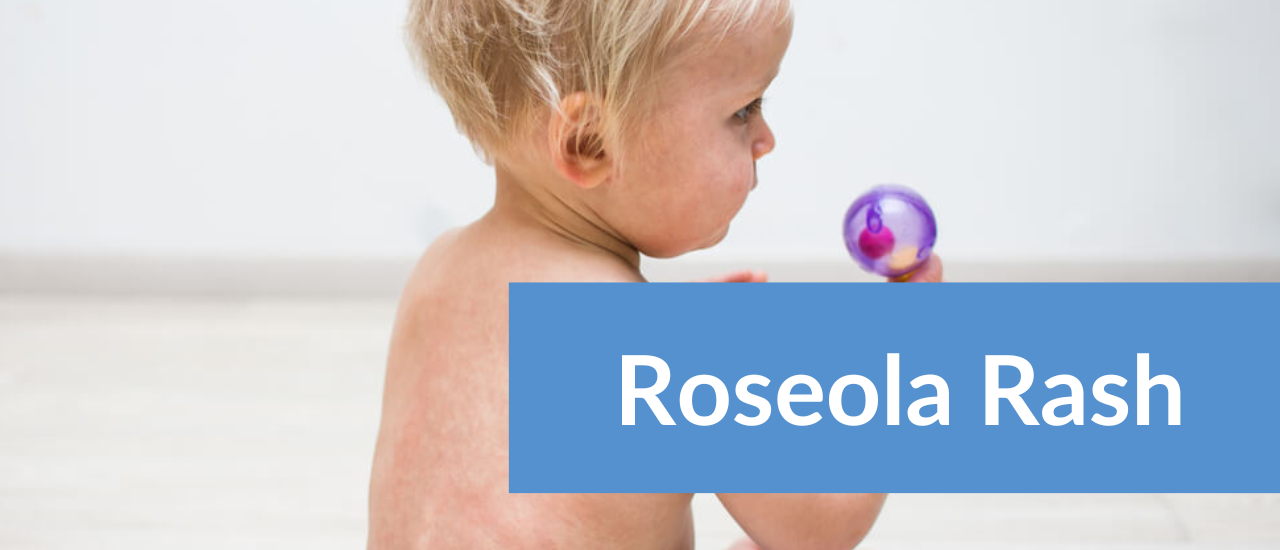


Roseola rash used to be referred to as “baby measles” in the past. A common ailment called roseola typically affects kids by the age of 2. It is brought on by a virus that people contract from one another. The human herpes virus is the cause of the illness roseola. An infectious viral infection, roseola. It generates a high fever, which is followed by the appearance of a rash when the fever decreases. Four to five days are typical for roseola. The majority of symptoms are so mild that parents are frequently unaware that their child has the virus. It is challenging to stop the spread of roseola because it is contagious even before symptoms show.
After an infection lasts around 10 days, roseola symptoms start to show. A high fever is the first indication of an illness. A youngster may experience roseola symptoms 10 to 15 days after being exposed to the virus. Your child’s temperature returning to normal can cause a raised, red rash to appear. It starts on the body and then extends to the arms and legs; the face is very infrequently affected. Children who have roseola experience symptoms like:
A virus, mostly human herpes virus 6 or occasionally human herpes virus 7, is the cause of roseola. It is transmitted through the air when a person with roseola coughs or sneezes, or by coming into touch with saliva from an infected person, such as while sharing a cup. Herpes viruses are a sizable family of DNA viruses that infect people and other animals with particular conditions. These family members are also referred to as herpesviruses.
In older infants, the risk of roseola is greatest. Most frequently, it occurs between 6 and 15 months. The risk of contracting roseola is greater in older newborns since they haven’t had enough time to create their own antibodies to numerous viruses. Antibodies acquired by moms during pregnancy provide protection for newborns. But over time, this immunity wanes.
Roseola can affect anyone, however children between the ages of 6 months and 3 years are the ones who are most frequently affected by the virus. The virus can spread by saliva or other respiratory droplets when an infected child coughs, sneezes, or talks, making it contagious even before the rash appears.
Two herpes virus strains cause the childhood disease roseola. Roseola frequently manifests as a fever and a rash on the neck and trunk. It will probably take 5–15 days for your child to show symptoms of illness if they are exposed to someone who has roseola and contracts the virus. The virus can spread by saliva or other respiratory droplets when an infected child coughs, sneezes, or talks, making it contagious even before the rash appears.
A high temperature may appear overnight. Before the rash appears, when the child has a high temperature, is when they are most contagious. After 3 to 5 days, the fever abruptly disappears. A pink, no-itch, no-pain rash appears as the fever lowers.
One-fourth of those who have roseola develop a rash. Sixth illness, commonly known as roseola, is typically not serious and clears up on its own after a week. It starts on the body and then extends to the arms and legs; the face is very infrequently affected.
Your child may have been infected with the roseola virus without you knowing it. There are numerous causes of fever in children. You can attribute the fever to another sickness and not realize that your child has roseola if they do not get the characteristic roseola rash.
Your youngster is no longer contagious once their temperature returns to normal for 24 hours. 35.4°C and 37.5°C are considered typical temperatures, which fall between 97.5°F and 99.5°F. A fever is defined as a temperature of at least 100.4 °F (38 °C).
Both measles and the roseola manifest with a high fever and rash, but they are two distinct illnesses. Even though measles can afflict anyone at any age and roseola in adults is extremely uncommon, they are both most frequently observed in children. People either breathe in or pick up tiny respiratory droplets from objects they contact to spread the roseola sickness. The typical roseola rash is non-itchy and turns white when pressed. The measles rash often goes away in 1-2 days. The measles rash is composed of discrete red dots that begin at the hairline and gradually descend down the neck, limbs, and feet; it is typically non-itchy as well.
In most kids, complications from roseola are uncommon. The most frequent side effect is febrile convulsions or seizures, which can affect 5–15% of kids. These are brought on by the high fevers associated with roseola and might be concerning when first noticed. These symptoms of a febrile seizure include:
What Is Spinal Meningitis: Various Types & Tips
What Is Acute Respiratory Infections & Its Common Infections
How Mosquitos Zika Virus Affect During Pregnancy?